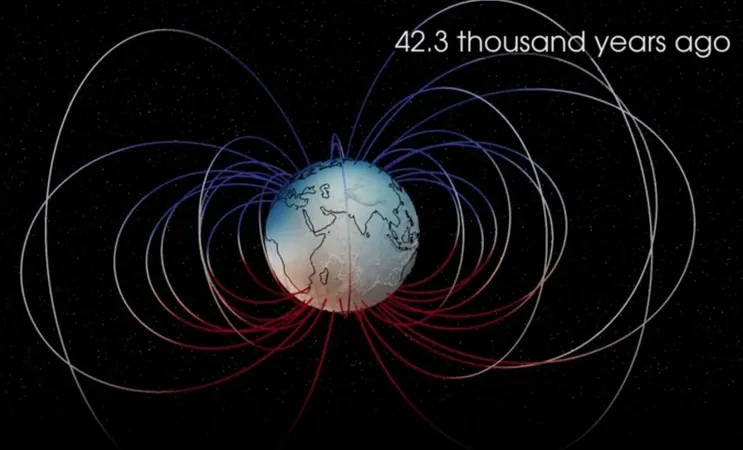
Unveiling the Mysterious Sound of Earth's Magnetic Pole Flip: A Frighteningly Fascinating Phenomenon!
2024-11-02
Author: Wei Ling
What if I told you that deep within the Earth, something bizarre and almost otherworldly was stirring? While the reality is far less dramatic, the latest audio exploration from the European Space Agency (ESA) gives us an intriguing glimpse into the Earth's magnetic field reversals, known as geomagnetic reversals.
Approximately every 450,000 years, Earth's magnetic poles switch places, with the North Pole becoming the South Pole and vice versa. This dramatic event, recognized as geomagnetic reversal, is astonishing, particularly because Earth's magnetic field is a vital shield against cosmic radiation. Despite concerns, research indicates that these occurrences are largely benign for life on our planet.
Geomagnetic reversals are not regular events; they are sporadic and chaotic, having occurred around 183 times in the last 83 million years. Interestingly, the last confirmed reversal took place approximately 780,000 years ago, leading some scientists to speculate that we might be due for another flip. However, not all magnetic shifts lead to complete reversals; sometimes they manifest as excursions—brief fluctuations in the magnetic field lasting hundreds of years, such as the Laschamps event about 41,000 years ago, when the field's strength significantly diminished.
These magnetic events might sound intimidating, but the good news is that they are a regular part of Earth's geological history. They come about due to various internal processes in the Earth’s outer core while the inner core remains stable. This phenomenon is documented through paleomagnetism, which studies the magnetic orientation of iron minerals frozen in volcanic rocks as they cool, effectively storing the history of Earth's magnetic direction.
During magnetic excursions or reversals, the strength of the magnetic field can dwindle. In fact, during the Laschamps event, the field's strength fell to a mere 5% of its normal intensity. This decline allowed a greater influx of cosmic rays, high-energy particles that bombard our atmosphere from various celestial sources, leading to showers of secondary particles. Increased exposure to cosmic rays could potentially have implications for satellite communications and even human health.
Recognizing the significance of these events, the ESA launched the Swarm mission in 2013, deploying three satellites to gather data on Earth's magnetic fields from the core up to the ionosphere. Researchers from the Technical University of Denmark and the German Research Center for Geosciences have creatively synthesized this data into a soundscape that captures the eerie atmosphere of the Laschamps event.
This captivating audio combines natural sounds, like rocks tumbling and wood creaking, to produce an almost alien-like auditory experience that invokes a sense of both the familiar and the uncanny. It resonates with the idea that, underneath our feet, ancient forces are in constant motion, highlighting the dynamic nature of our planet.
So, are you ready to confront the eerie sounds of our planet's magnetic history? Click here to listen to this spine-chilling soundscape and discover the secrets lurking in the depths of the Earth!



 Brasil (PT)
Brasil (PT)
 Canada (EN)
Canada (EN)
 Chile (ES)
Chile (ES)
 España (ES)
España (ES)
 France (FR)
France (FR)
 Hong Kong (EN)
Hong Kong (EN)
 Italia (IT)
Italia (IT)
 日本 (JA)
日本 (JA)
 Magyarország (HU)
Magyarország (HU)
 Norge (NO)
Norge (NO)
 Polska (PL)
Polska (PL)
 Schweiz (DE)
Schweiz (DE)
 Singapore (EN)
Singapore (EN)
 Sverige (SV)
Sverige (SV)
 Suomi (FI)
Suomi (FI)
 Türkiye (TR)
Türkiye (TR)